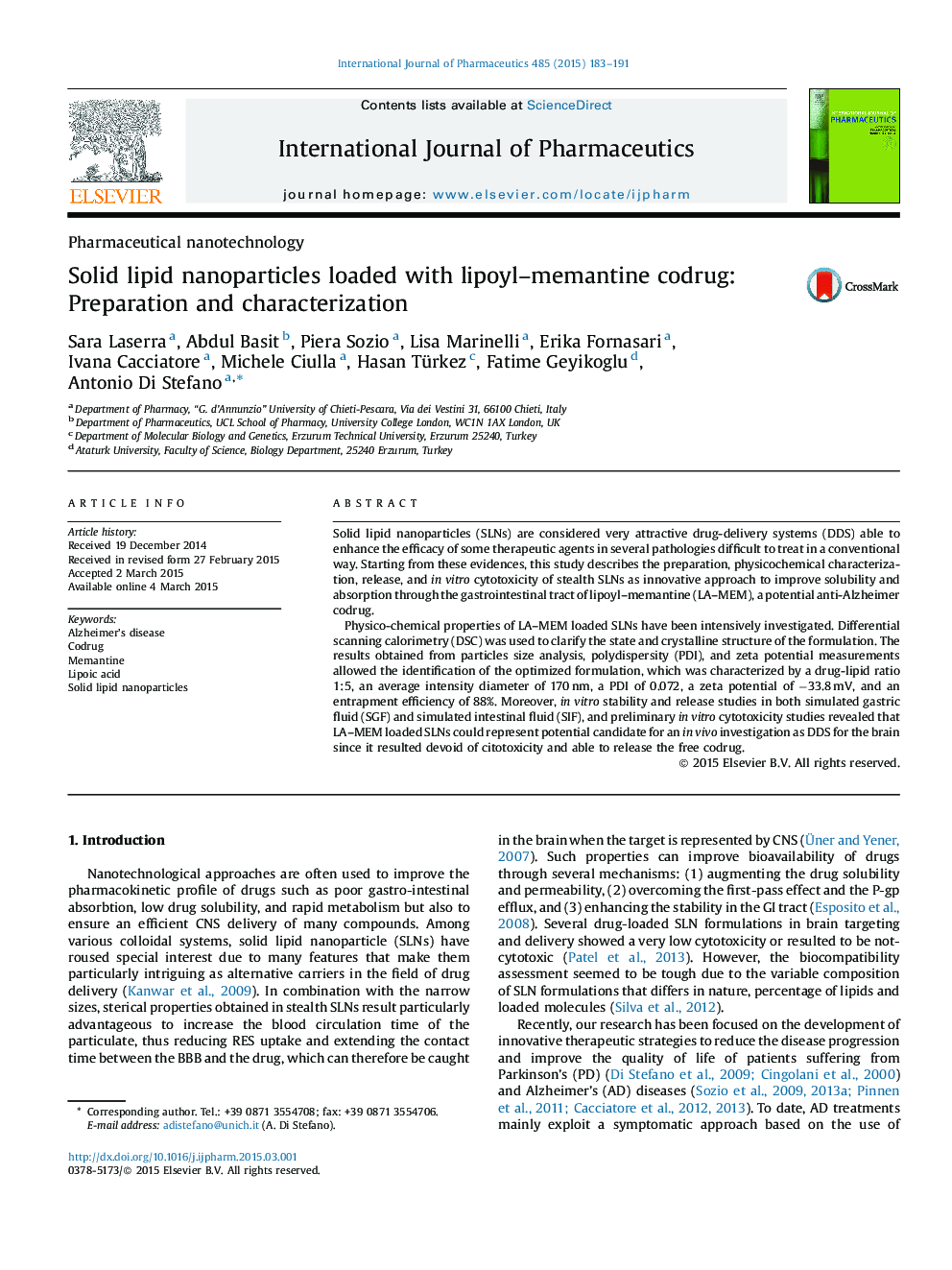| Article ID | Journal | Published Year | Pages | File Type |
|---|---|---|---|---|
| 2501471 | International Journal of Pharmaceutics | 2015 | 9 Pages |
Solid lipid nanoparticles (SLNs) are considered very attractive drug-delivery systems (DDS) able to enhance the efficacy of some therapeutic agents in several pathologies difficult to treat in a conventional way. Starting from these evidences, this study describes the preparation, physicochemical characterization, release, and in vitro cytotoxicity of stealth SLNs as innovative approach to improve solubility and absorption through the gastrointestinal tract of lipoyl–memantine (LA–MEM), a potential anti-Alzheimer codrug.Physico-chemical properties of LA–MEM loaded SLNs have been intensively investigated. Differential scanning calorimetry (DSC) was used to clarify the state and crystalline structure of the formulation. The results obtained from particles size analysis, polydispersity (PDI), and zeta potential measurements allowed the identification of the optimized formulation, which was characterized by a drug-lipid ratio 1:5, an average intensity diameter of 170 nm, a PDI of 0.072, a zeta potential of −33.8 mV, and an entrapment efficiency of 88%. Moreover, in vitro stability and release studies in both simulated gastric fluid (SGF) and simulated intestinal fluid (SIF), and preliminary in vitro cytotoxicity studies revealed that LA–MEM loaded SLNs could represent potential candidate for an in vivo investigation as DDS for the brain since it resulted devoid of citotoxicity and able to release the free codrug.
Graphical abstractFigure optionsDownload full-size imageDownload high-quality image (209 K)Download as PowerPoint slide
